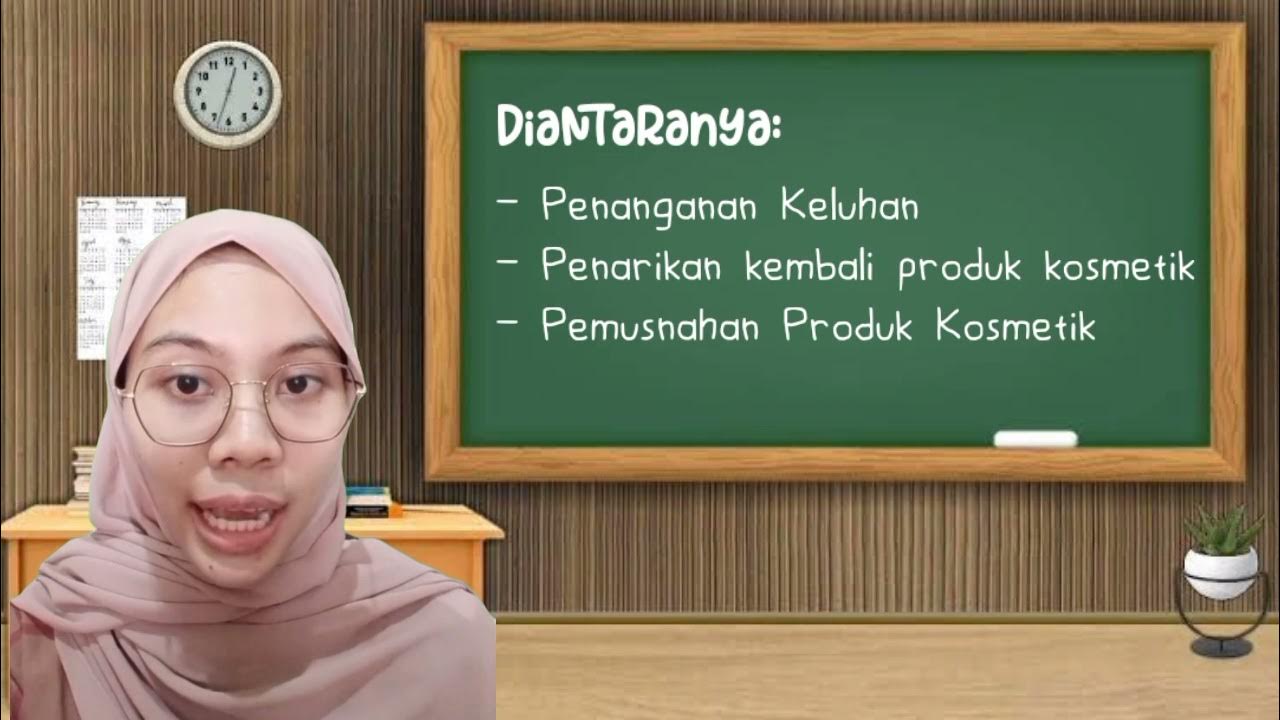Panduan Penerapan Good Manufacturing Practice (GMP) Sesuai SNI CXC 1:1969 Revisi 2020
Summary
TLDRThe video discusses the implementation of Good Manufacturing Practices (GMP) in accordance with SNI CXC 1969 Revision 2020. It emphasizes the importance of food hygiene, safety, and quality in food processing, aiming to enhance industry competitiveness and consumer trust. Key aspects include identifying and controlling food hazards, maintaining hygienic production environments, and proper training for personnel. The video highlights the need for effective documentation, allergen management, and a strong food safety culture among all staff to ensure the production of safe and quality food products.
Takeaways
- 😀 GMP (Good Manufacturing Practices) are essential for ensuring food safety and quality, aligning with SNI CXC1969 revision 2020.
- 🍽️ The primary goals of implementing GMP include producing safe, high-quality food and ensuring consumer satisfaction.
- 🔍 Identifying and controlling food hazards—biological, chemical, physical, and allergenic—is crucial in food production.
- 🏭 The design of production facilities should minimize contamination risks, including proper layout, sanitation, and maintenance.
- 🚫 Cross-contamination can occur from direct contact or through workers, surfaces, air, and water; prevention strategies must be in place.
- 👨🏭 Personnel training is vital for maintaining hygiene standards and ensuring staff can recognize and manage potential risks.
- 🧼 Personal hygiene is a must for all workers in food production; they should use protective gear and follow strict handwashing protocols.
- 🔄 Documentation and product recall processes are necessary to enhance quality assurance and address any food safety issues promptly.
- 🌱 An effective allergen management system should prevent cross-contact between allergenic and non-allergenic foods.
- 🙌 Cultivating a positive food safety culture within the organization is key to the successful implementation of GMP.
Q & A
What is the purpose of Good Manufacturing Practices (GMP) according to SNI CXC 1969 Revision 2020?
-The purpose of GMP is to ensure the production of safe and high-quality processed food, encourage responsibility within the food industry for product safety, and enhance competitiveness and efficiency.
What are some of the key areas covered in the implementation of GMP?
-Key areas include understanding and controlling food hazards, facility design and maintenance, hygiene practices, cleaning and disinfection protocols, pest control, and personnel training.
What types of food hazards should producers be aware of?
-Producers should be aware of biological hazards (e.g., Salmonella, E. coli), chemical hazards (e.g., aflatoxins, heavy metals), physical hazards (e.g., glass, metal fragments), and allergen-related hazards.
What design considerations should be taken into account for food production facilities?
-Facilities should be located away from contaminants, designed for easy sanitation, have waterproof and smooth surfaces, provide proper ventilation, and separate raw materials from finished products.
Why is cleaning and maintenance important in food production?
-Cleaning and maintenance are crucial to prevent contamination, ensure hygiene, and manage waste effectively, which ultimately helps in producing safe food.
What measures can be taken to prevent cross-contamination?
-Preventive measures include proper facility layout, regular equipment cleaning, using separate tools for raw and finished products, clear labeling, and storing hazardous materials away from food.
How important is training for personnel in the context of GMP?
-Training is vital as it equips personnel with the necessary knowledge and skills to maintain hygiene standards, identify risks, and respond appropriately to potential issues in food safety.
What role does allergen management play in food safety?
-Allergen management is critical to prevent cross-contact between allergenic and non-allergenic foods, thus protecting consumers who may have food allergies.
What is the significance of documentation in food processing?
-Documentation ensures quality control, compliance with safety standards, and facilitates efficient recall processes if products are suspected of causing health issues.
How can a positive food safety culture be established in an organization?
-A positive food safety culture can be established by promoting commitment from all personnel, providing ongoing training, and reinforcing the importance of safe food handling practices.
Outlines

هذا القسم متوفر فقط للمشتركين. يرجى الترقية للوصول إلى هذه الميزة.
قم بالترقية الآنMindmap

هذا القسم متوفر فقط للمشتركين. يرجى الترقية للوصول إلى هذه الميزة.
قم بالترقية الآنKeywords

هذا القسم متوفر فقط للمشتركين. يرجى الترقية للوصول إلى هذه الميزة.
قم بالترقية الآنHighlights

هذا القسم متوفر فقط للمشتركين. يرجى الترقية للوصول إلى هذه الميزة.
قم بالترقية الآنTranscripts

هذا القسم متوفر فقط للمشتركين. يرجى الترقية للوصول إلى هذه الميزة.
قم بالترقية الآنتصفح المزيد من مقاطع الفيديو ذات الصلة

12 Aspek CPOB (2012) SMK Farmasi

Mini Materi: Good X Practice

Pengertian CPOB, CPKB DAN CPOTB

Good Laboratory Practices in Microbiology

What are GMP Guidelines? | Good Manufacturing Practices for Food Safety | SafetyCulture

CAPA, investigation & deviation in pharma, foods and other industries الإجراء التصحيحى و الوقائي
5.0 / 5 (0 votes)
